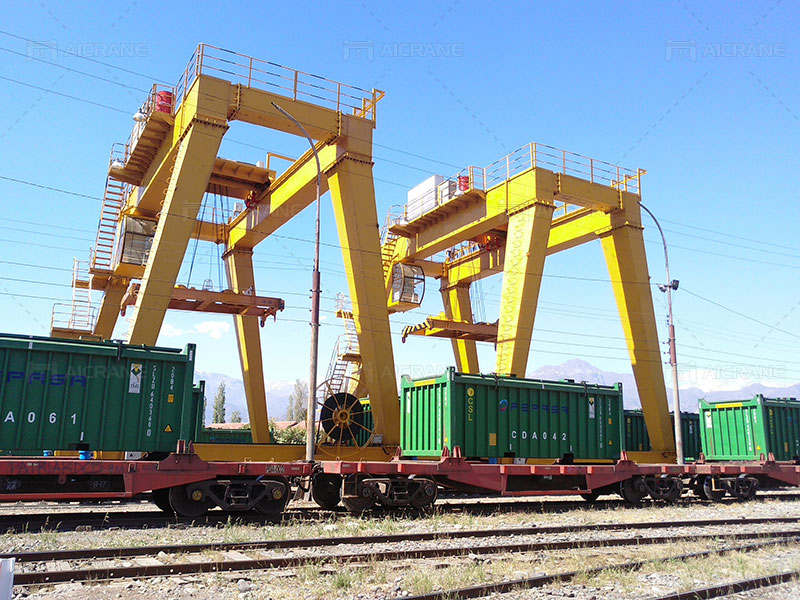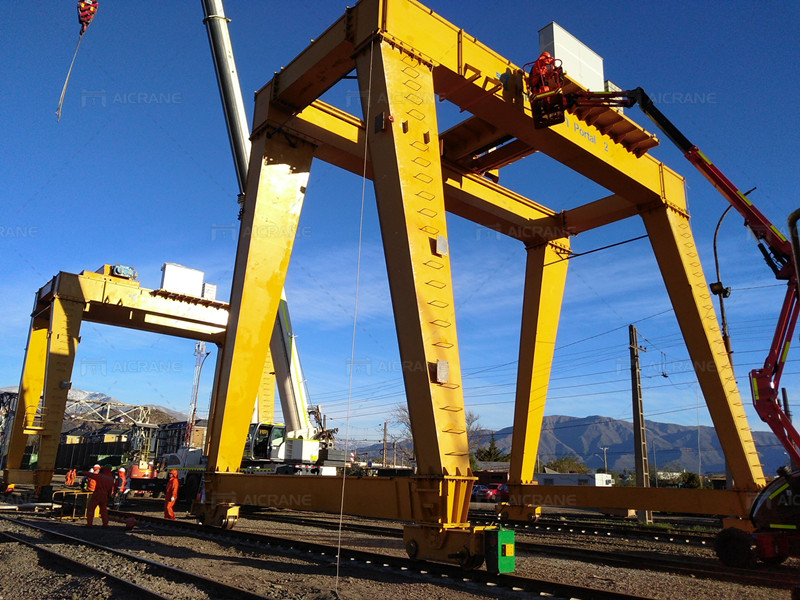Gantry cranes, also known as portal cranes or gantry bridge cranes, are indispensable tools in various industries for lifting and moving heavy loads with precision and efficiency. With their unique design and versatility, gantry cranes offer practical solutions for material handling tasks in diverse environments. In this article, we will delve into the world of gantry cranes, exploring their features, applications, advantages, and considerations for implementation.
Understanding Gantry Crane Design and Components
Gantry cranes are characterized by their overhead structure supported by legs or columns, allowing for movement along a track or rail system. They consist of several key components, including the bridge or girder, which supports the hoist and trolley mechanism, end trucks or wheels for movement along the runway, and legs or columns for support and stability. The design of gantry cranes can vary based on specific application requirements, such as lifting capacity, span, and operational environment.
Exploring Gantry Crane Applications
Gantry cranes find applications across a wide range of industries and environments, including manufacturing, construction, shipbuilding, warehousing, and logistics. They are commonly used for tasks such as loading and unloading cargo from ships and trucks, moving heavy machinery(Козловой кран на пневмоходу) and components in industrial facilities, assembling large structures, and handling materials in storage yards and construction sites. The versatility of gantry cranes makes them suitable for both indoor and outdoor applications, adapting to various lifting requirements and operational conditions.

Advantages of Gantry Cranes
Gantry cranes offer several advantages that make them preferred choices for material handling operations. Their ability to move horizontally along a rail system provides greater coverage and flexibility compared to stationary cranes, allowing for efficient utilization of workspace and access to multiple work areas. The adjustable height of the legs or columns enables gantry cranes(Козловые краны купить) to accommodate varying clearance heights and uneven ground surfaces, making them adaptable to different environments. Additionally, gantry cranes can be easily relocated or dismantled for temporary use or reconfiguration, offering cost-effective solutions for changing operational needs.
Considerations for Gantry Crane Implementation
Implementing gantry cranes requires careful consideration of various factors to ensure optimal performance, safety, and efficiency. Factors such as lifting capacity, span, height clearance, operational environment, and power source availability should be evaluated to select the appropriate crane configuration and specifications. Additionally, compliance with relevant safety standards and regulations, proper installation and maintenance procedures, and operator training are essential for safe and reliable gantry crane operation.
Types of Gantry Cranes
Gantry cranes come in different types and configurations to suit specific application requirements. Single girder gantry cranes feature a single main girder supported by legs or columns, offering cost-effective solutions for light to medium-duty lifting tasks. Double girder gantry cranes(козловой кран 50 тонн) utilize two parallel girders for increased stability and lifting capacity, making them suitable for heavy-duty applications requiring higher precision and load-bearing capabilities. Additionally, semi-gantry cranes are designed with one end supported by a building structure or existing support system, offering advantages in space-constrained environments.
Customization Options
Gantry cranes can be customized to meet specific application requirements, offering versatility and adaptability to diverse operational needs. Manufacturers often provide customization options such as adjustable spans, specialized lifting attachments, extended heights, and automation features to tailor gantry cranes to unique lifting tasks and environmental conditions. Businesses can work closely with crane suppliers to design customized gantry crane solutions that optimize efficiency, productivity, and safety in their operations.

Environmental Considerations
Gantry cranes are designed to operate in various environmental conditions, including indoor and outdoor settings, as well as harsh environments such as ports, shipyards, and construction sites. They are equipped with features to withstand factors such as temperature extremes, humidity, corrosive atmospheres, and exposure to outdoor elements. Additionally, eco-friendly options such as electric-powered gantry cranes contribute to sustainability efforts by reducing emissions and energy consumption, aligning with environmental regulations and corporate sustainability goals.
Maintenance and Serviceability
Proper maintenance is essential for ensuring the longevity and reliability of gantry cranes. Regular inspections, lubrication of moving parts, and proactive repairs are necessary to prevent breakdowns and maintain optimal performance. Gantry crane manufacturers(производство козловых кранов) often provide maintenance services, spare parts availability, and technical support to assist businesses in maintaining their cranes. Implementing a proactive maintenance program minimizes downtime, extends the lifespan of gantry cranes, and ensures continuous productivity in material handling operations.
In conclusion, gantry cranes play a pivotal role in material handling operations across various industries, offering versatility, efficiency, and reliability. By understanding their design, applications, advantages, and implementation considerations, businesses can harness the full potential of gantry cranes to optimize workflow, enhance productivity, and ensure safe and efficient material handling operations in their facilities.